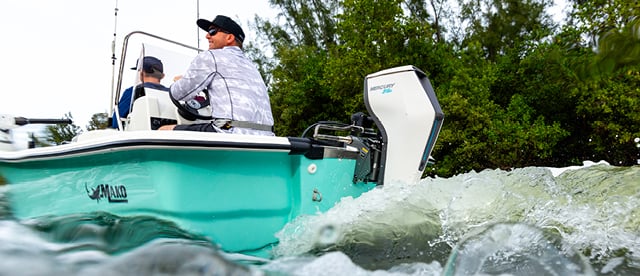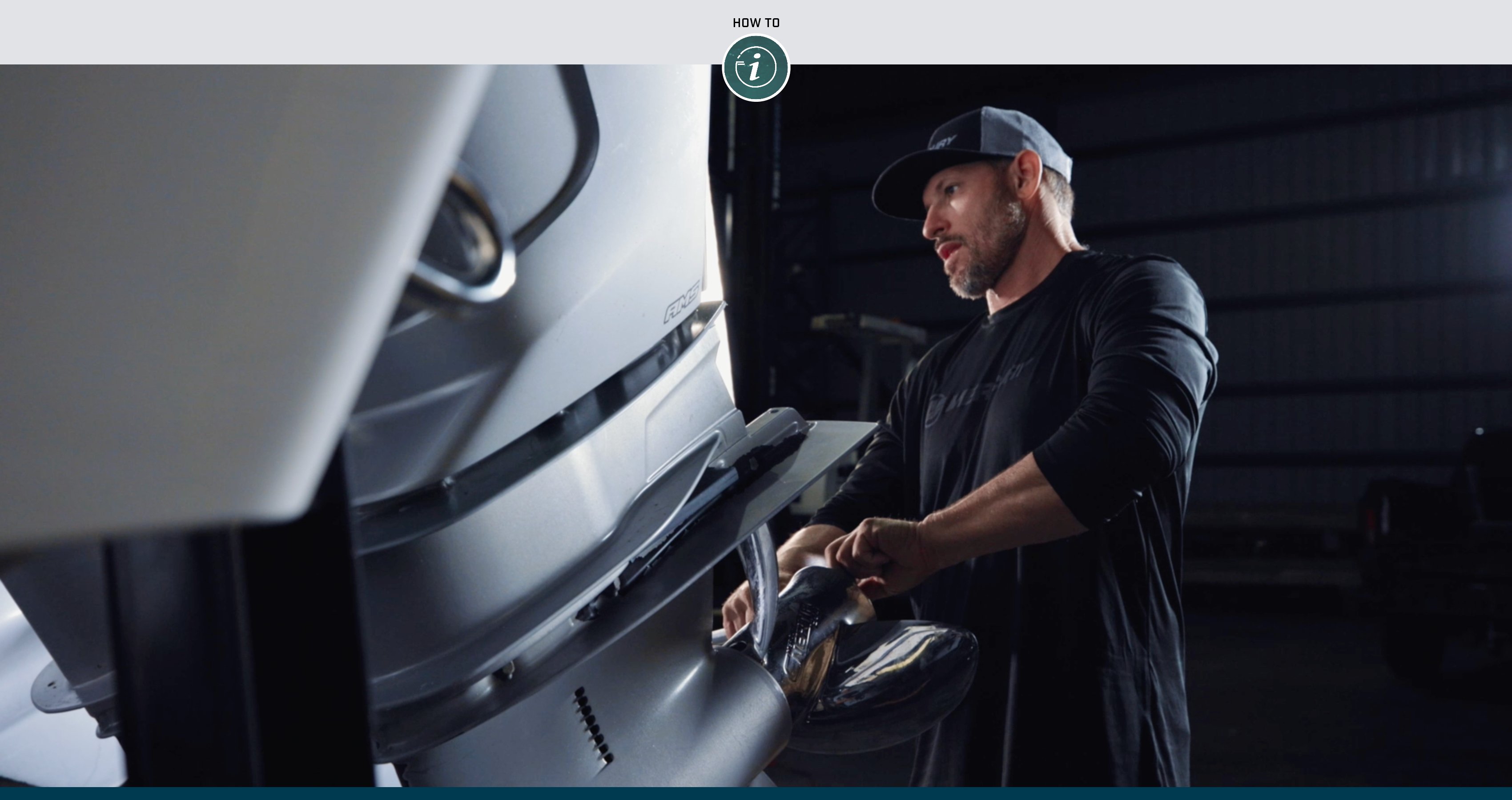Experience has taught professional fishing guide and Mercury Pro Team member Rush Maltz that propeller selection is critical to optimizing all-around boat performance, including the comfort of his clients when conditions are challenging.
“I’m a charter boat captain. I don’t get to pick my days,” said Maltz. “I need to run on plane at low rpm and I want the boat to ride level and stay on top of the waves.”
Testing a number of Mercury propellers for his SeaVee® 340Z powered by triple V8 300hp Verado® outboards, Maltz selected the Enertia ECO for its combination of blade area for stern lift and improved fuel efficiency.
“Most boat builders do a great job at selecting a good all-around prop that will work in a variety of situations,” said Gary Diehl, Mercury propeller category manager, “but the builder can’t anticipate every application and situation, or the preference of every owner. Changing the prop size or model can help you achieve ideal performance.”
Ready to optimize the performance of your boat? Here are some tips for dialing in your prop.
Get a Baseline
First establish baseline performance with your current propeller. The GPS-enabled speedometer or multi-function display on newer boats is usually very accurate. If you have a boat equipped with a pitot tube speedometer, consider using a hand-held GPS device or download a speedometer app to your smartphone. If your boat is not equipped with a tachometer to report engine RPM, one option may be Mercury VesselView Mobile®, which wirelessly connects your engine to your mobile device to display a variety of engine data. VesselView Mobile can also be used to report boat speed.
Pick a calm day or protected water where you can run at full throttle in comfort. For the most accurate result, do your baseline testing with the boat loaded as you’d typically use it.
How To Test Performance
Run the boat up to wide-open throttle (WOT) with the engine or drive trimmed out for maximum lift. It is very easy to over-trim, in which case the prop will begin to slip and boat speed will actually go down even as the RPM increases. Bump the trim out in small increments until you see the boat losing speed. Then bump the trim back in and watch the speed come back. Now you’re at max trim for that prop. Note your engine RPM and your boat speed. If there’s wind or current run your tests in both directions and then average the results. Ideally engine RPM should be near the top of the WOT operating range, which you can find in your operator’s manual.
To measure acceleration, you can record time to plane – full throttle from idle in gear to when the bow comes down – or the time it takes to reach 20 mph using a stopwatch, or use the acceleration feature in Mercury VesselView Mobile. Average the time in seconds for three or four attempts. Finally, make some notes on how the boat handles with your baseline prop. Does the prop grip the water in turns, or is it likely to slip or blow out if you don’t trim in?
Pick an Alternate Prop
With your baseline testing complete, you’re ready to try alternate props. A Mercury Authorized Dealer can offer some guidance on which prop models will be a good match for your boat and for where and how you boat. The Mercury Prop Selector Tool is also a great resource that will help you narrow down prop options. Some dealers may let you test a prop you intend to buy.
With some prop options in hand, swap props and repeat your testing routine. Also note any changes in how the boat handles. Remember that while top speed is one gauge of propeller performance, it’s not the most important criteria for boaters who don’t spend much time at wide-open throttle. A prop that delivers brisk on-plane performance with good economy and handling in the mid-range can be an upgrade you’ll appreciate every time you drop the throttle.
To get a pro’s perspective, watch the video for more insight from Maltz. He discovered some surprising results that could prove to be quite useful.
All trademarks are the property of their respective owners.




